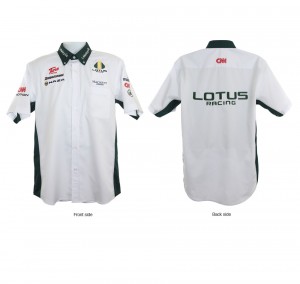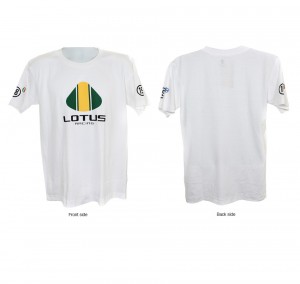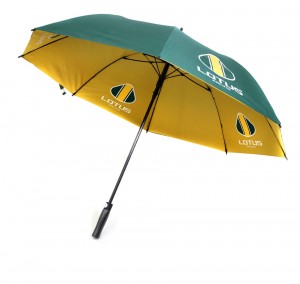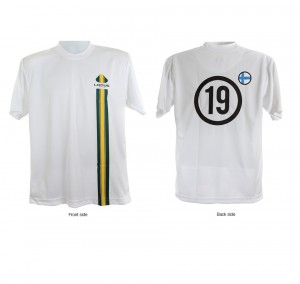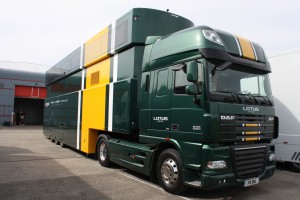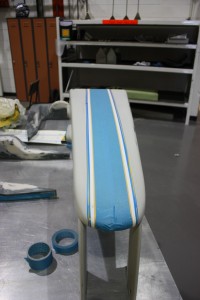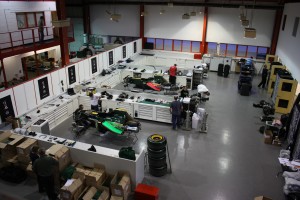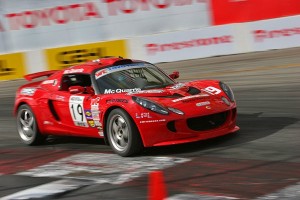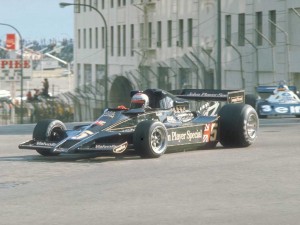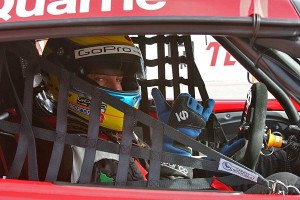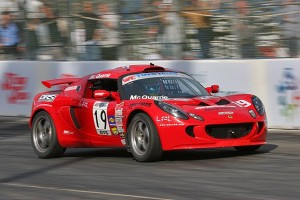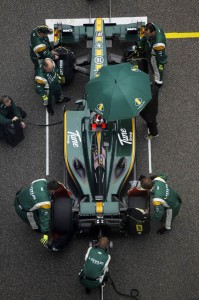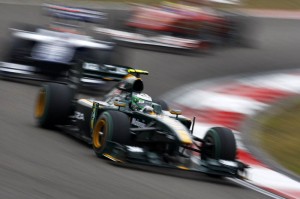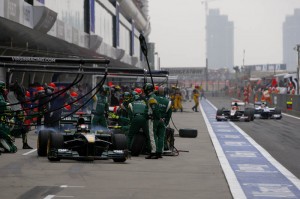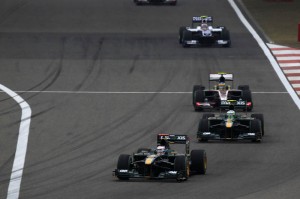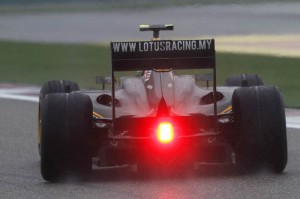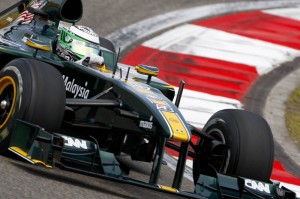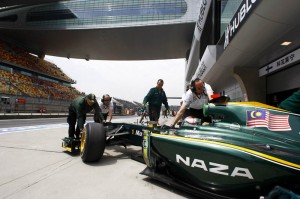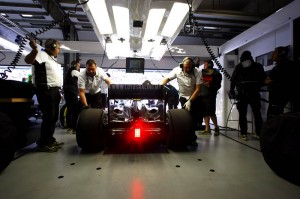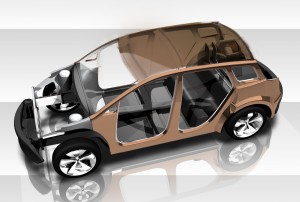
Lotus Engineering has conducted a study to develop a commercially viable mass reduction strategy for mainstream passenger vehicles. This study, released by the International Council on Clean Transportation, focused on the use of lightweight materials and efficient design and demonstrated substantial mass savings. When compared with a benchmark Toyota Venza crossover utility vehicle, a 38% reduction in vehicle mass, excluding powertrain, can be achieved for only a 3% increase in component costs using engineering techniques and technologies viable for mainstream production programmes by 2020. The 2020 vehicle architecture utilises a mix of stronger and lighter weight materials, a high degree of component integration and advanced joining and assembly methodologies.
Based on U.S. Department of Energy estimates, a total vehicle mass reduction of 33% including powertrain, as demonstrated on the 2020 passenger car model, results in a 23% reduction in fuel consumption. This study highlights how automotive manufacturers can adopt the Lotus philosophy of performance through light weight.
Dr Robert Hentschel, Director of Lotus Engineering said: “Lighter vehicles are cleaner and more efficient. That philosophy has always been core to Lotus’ approach to vehicle engineering and is now more relevant than ever. Lightweight Architectures and Efficient Performance are just two of our core competencies and we are delighted to have completed this study with input from the National Highway Traffic Safety Administration and the U.S. Environmental Protection Agency to provide direction for future CO2 reductions. We believe that this approach will be commonplace in the industry for the future design of vehicles.”
The study investigated scenarios for two distinct vehicle architectures appropriate for production in 2017 and 2020. The near-term scenario is based on applying industry leading mass reducing technologies, improved materials and component integration and would be assembled using existing facilities. The mass reduction for this nearer term vehicle, excluding powertrain, is 21% with an estimated cost saving of 2%.
A benchmark Toyota Venza was disassembled, analysed and weighed to develop a bill of materials and understand component masses. In developing the two low mass concepts, Lotus Engineering employed a total vehicle mass reduction strategy utilising efficient design, component integration, materials selection, manufacturing and assembly. All key interior and exterior dimensions and volumes were retained for both models and the vehicles were packaged to accommodate key safety and structural dimensional and quality targets. The new vehicles retain the vision, sight line, comfort and occupant package of the benchmarked Toyota Venza.
Darren Somerset, Chief Executive Officer of Lotus Engineering Incorporated, Lotus’ North American engineering division which led the study, said “A highly efficient total vehicle system level architecture was achieved by developing well integrated sub-systems and components, innovative use of materials and process and the application of advanced analytical techniques. Lotus Engineering is at the forefront of the automotive industry’s drive for the reduction in CO2 and other greenhouse gas emissions and this study showcases Lotus Engineering’s expertise and outlines a clear roadmap to cost effective mass efficient vehicle technologies.”
Mass and Cost Summary
|
Base Toyota Venza
excluding powertrain
|
Lotus Engineering Design
|
|
System
|
Weight
(kg)
|
2020 Venza
|
2017 Venza
|
|
% Mass Reduction
|
% Cost Factor
|
% Mass Reduction
|
% Cost Factor
|
| Body |
383
|
42%
|
135%
|
15%
|
98%
|
| Closures/Fenders |
143
|
41%
|
76%
|
25%
|
102%
|
| Bumpers |
18.0
|
11%
|
103%
|
11%
|
103%
|
| Thermal |
9.25
|
0%
|
100%
|
0%
|
100%
|
| Electrical |
23.6
|
36%
|
96%
|
29%
|
95%
|
| Interior |
252
|
39%
|
96%
|
27%
|
97%
|
| Lighting |
9.90
|
0%
|
100%
|
0%
|
100%
|
| Suspension/Chassis |
379
|
43%
|
95%
|
26%
|
100%
|
| Glazing |
43.7
|
0%
|
100%
|
0%
|
100%
|
| Misc. |
30.1
|
24%
|
99%
|
24%
|
99%
|
| Totals |
1290
|
38%
|
103%
|
21%
|
98%
|
The 2020 Passenger Car Technical Details
Body
The body includes the floor and underbody, dash panel assembly, front structure, body sides and roof assembly. The baseline Toyota Venza body-in-white contained over 400 parts and the revised 2020 model reduced that part count to 211. The body-in-white materials used in the baseline Venza were 100% steel, while the 2020 model used 37% aluminium, 30% magnesium, 21% composites and 7% high strength steel. This reduces the structure mass by 42% from 382 kg to 221 kg.
The low mass 2020 body-in-white would be constructed using a low energy joining process proven on high speed trains; this process is already used on some low volume automotive applications. This low energy, low heat friction stir welding process would be used in combination with adhesive bonding, a technique already proven on Lotus production sports cars. In this instance, the robotically controlled welding and adhesive bonding process would be combined with programmable robotic fixturing, a versatile process which can be used to construct small and large vehicles using the same equipment.
Closures/Fenders
The closures include all hinged exterior elements, for example, the front and rear doors and the rear liftgate. One alternative approach included fixing the primary boot section to improve the structure, reduce masses and limit exposure to high voltage systems. A lightweight access door was provided for checking and replacing fluids.
The closures on the baseline Toyota Venza were made up of 100% steel. The low mass Venza closures/fenders would be made up of 33% magnesium, 21% plastic, 18% steel, 6% aluminium with the other 22% consisting of multiple materials. The mass savings are 41%, a reduction from 143 kg to 84 kg.
Interior
The interior systems consist of the instrument panel, seats, soft and hard trim, carpeting, climate control hardware, audio, navigation and communication electronics, vehicle control elements and restraint systems. There is a high level of component integration and electronic interfaces replace mechanical controls on the low mass model. For the 2020 model the instrument panel is eliminated replaced by driver and passenger side modules containing all key functional and safety hardware. A low mass trim panel made from a high quality aerated plastic closes out the two modules. The air conditioning module is incorporated into the console eliminating the need for close out trim panels; heated and cooled cupholders are integrated into the HVA/C module. The audio/HVA/C/Navigation touch screen contains the shifter and parking brake functions and interfaces with small electric solenoids. This eliminates conventional steel parking brake and shifter controls and cables as well as freeing up interior space.
The front seats mount to the structural sill and tunnel structure eliminating conventional seat mounting brackets (10 kg) and the need to locally reinforce the floorpan. The composite front seat structure utilises proven foam technology; the seat mass is reduced by up to 50%. The rear seat support structure is moulded into the composite floorpan eliminating the need for a separate steel support structure. The front and rear seats use a knit to shape fabric that eliminates material scrap and offers customers the opportunity to order their favourite patterns for their new vehicle. Four removable carpet modules replace the traditional full floor carpeting; this reduces mass and allows cost effective upgrading of the carpet quality. The floorpan is grained in all visible areas. The 2017 production interior mass was reduced from 250 kg to 182 kg with projected cost savings of 3%. The 2020 production interior mass was 153 kg with projected cost savings of 4%.
Chassis/Suspension
The chassis and suspension system was composed of suspension support cradles, control links, springs, shock absorbers, bushings, stabilizer bars and links, steering knuckles, brakes, steering gearbox, bearings, hydraulic systems, wheels, tires, jack and steering column.
The chassis and suspension components were downsized based on the revised vehicle curb weight, maintaining the baseline carrying capacity and incorporating the mass of the hybrid drive system.
The total vehicle curb weight reduction for the 2020 vehicle was 38%, excluding the powertrain. Based on the gross vehicle weight, which includes retaining the baseline cargo capacity of 549 kg and utilising a hybrid powertrain, the chassis and the suspension components were reduced in mass by 43%, with projected cost savings of 5%.
Front and Rear Bumpers
The materials used on the front and rear bumpers were very similar to the existing model to maintain the current level of performance. One change was to replace the front steel beam with an aluminium beam which reduced mass by 11%. The use of a magnesium beam was analysed but at the current time exceeded the allowable price factor.
Heating, Ventilation and Air Conditioning
The air conditioning system was integrated into a passenger compartment system and an engine compartment system. This section addressed the under hood components which included the compressor, condenser and related plumbing. The under hood components were investigated for technologies and mass.
The study showed a relatively small mass difference for the underhood air conditioning components based on both vehicle mass and interior volume. Because of the highly evolved nature of these components, the requirements for equivalent air conditioning performance and the lack of a clear consensus for a future automotive refrigerant, the mass and cost of the Toyota Venza compressor, condenser and associated plumbing were left unchanged for both the 2017 and 2020 models.
Glazing
The glazing of the baseline vehicle was classified into two groups: fixed and moving. The fixed glass is bonded into position using industry standard adhesives and was classified into two sub groups: wiped and non wiped.
Factors involved in making decisions about glazing materials include the level of abrasion it is likely to see during the vehicle life, the legislative requirements for light transmissibility, the legislative requirements for passenger retention and the contribution it will make to interior noise abatement.
The specific gravity of glass is 2.6 and the thickness of a windshield is usually between 4.5 mm and 5 mm, therefore the mass per square metre of 5 mm glass is approximately 13 kgs. The high mass of glass provides a strong incentive to reduce the glazed area of the body, reduce the thickness of the glass and find a suitable substitute that is lighter. Fixed glass on the side of the vehicle offers the best opportunity for mass reduction.
The mass of the baseline glazing was retained for both the 2017 and 2020 models; this was a conservative approach. It is possible that coated polycarbonate materials may become mainstream in the 2017 – 2020 timeframe for fixed applications.
Electrical/Lighting
The estimated mass savings for using thinwall cladding and copper clad aluminium wiring, as used on the 2017 model was 36% versus the baseline model. The lighting technologies section reviewed included diodes, xenon and halogen. The study also reviewed a variety of wireless technologies under development for non-transportation applications that could be used in this time period pending successful development for mobile applications.
More information
The full report, entitled ‘An Assessment of Mass Reduction Opportunities for a 2017 – 2020 Model Year Vehicle Program’ can be found at this link (pdf).
[press release from Lotus Engineering]
